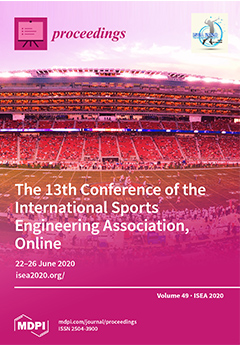Need Help?
Proceedings, 2020, ISEA 2020
The 13th Conference of the International Sports Engineering Association
Online | 22–26 June 2020
Volume Editors:
Motomu Nakashima, Tokyo Institute of Technology, Japan
Takeo Maruyama, Tokyo Institute of Technology, Japan
Yusuke Miyazaki, Tokyo Institute of Technology, Japan
- Issues are regarded as officially published after their release is announced to the table of contents alert mailing list.
- You may sign up for e-mail alerts to receive table of contents of newly released issues.
- PDF is the official format for papers published in both, html and pdf forms. To view the papers in pdf format, click on the "PDF Full-text" link, and use the free Adobe Reader to open them.
Cover Story (view full-size image):
Previous Issue
Next Issue
Issue View Metrics
Multiple requests from the same IP address are counted as one view.



